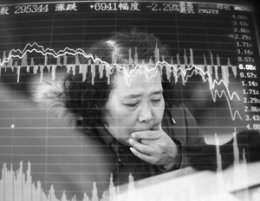
Global Economic Crisis
 What is the competition between Big Seven and BRIX?
What is the competition between Big Seven and BRIX?
In Brazil, industry in January showed a record decline in 23 months, minus 13.8 per cent (the country ' s most recent production index was in a positive area in January 2014). In the first month of this year, Brazilian imports fell by 31 per cent by January 2015. Exports from Brazil were, in fact, 10.4 per cent higher in February than the previous year, but in any case they were actually at the 2010 level.
In SAR, exports fell by 18.8 per cent in January, with the most significant decrease in the export of precious metals and stones, machinery and transport equipment, food products and chemicals (this segment was 25 per cent and above). In this case, it is sufficient to recall that China is the country ' s main trading partner. Industrial production in SAR declined by 2.5% in January compared with the first month of 2015.
Finally, Russia in January demonstrated the negative dynamics of foreign trade among the BRICS countries. Russian exports fell by 36.4 per cent per annum (from 27, 2 billion dollars in January 2015 to 17, 3 billion), while imports fell by 20.9 per cent over the same period (from 12, 3 billion to $9,7 billion). As a result, Russia ' s foreign trade surplus declined almost twice. This year ' s industrial production index, according to Rosstat, was 97.3 per cent of last January.
 IMF is alarming
IMF is alarming
Recalling that, at the recent meeting of the financial authorities of the G-20 countries in Shanghai, participants recognized the recovery of the world economy as too weak and uneven, David Lipton identified the position of IMF in this regard: recent risks have become even higher due to the volatility of financial markets and commodity prices. In just a few weeks of 2016, the fall in world stock indices was more than 6 per cent (and in some Asian markets, such as China and Japan, more than 20 per cent), which meant a reduction in global market capitalization of companies by $6 trillion, or 8.5 per cent of global GDP. This is about half the decline in total capitalization of stock markets in 2008, during the most severe phase crisis (12, 3 trillion dollars).
A key negative factor in the current economic situation in IMF is the sharp decline in international trade. The main impact is also on developing markets: last year they received $200 billion in net capital outflows, while the capital inflow in 2014 was only $125 billion.








